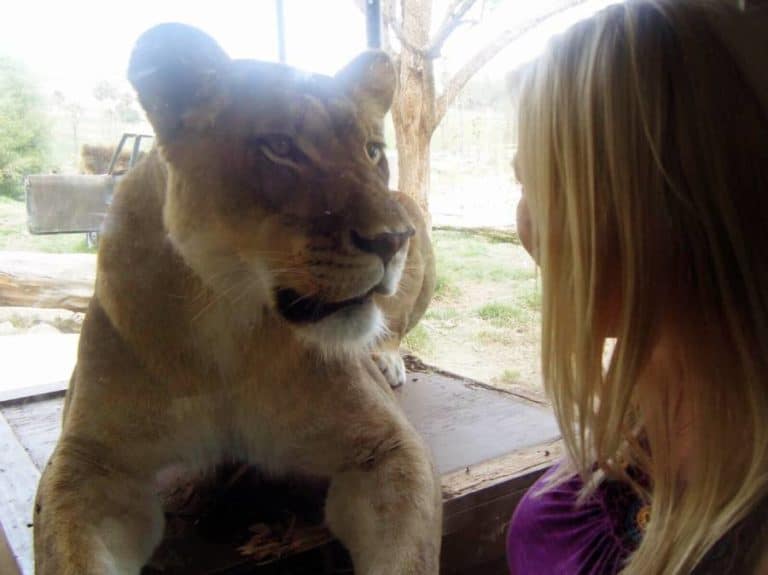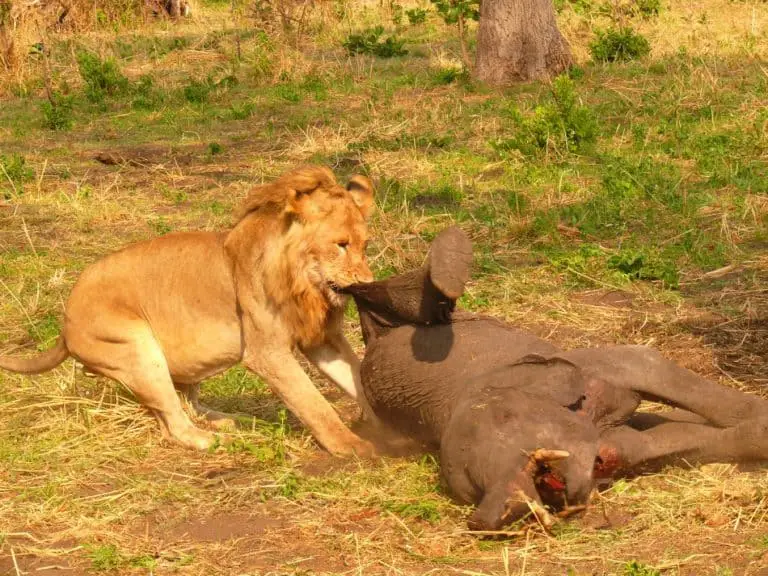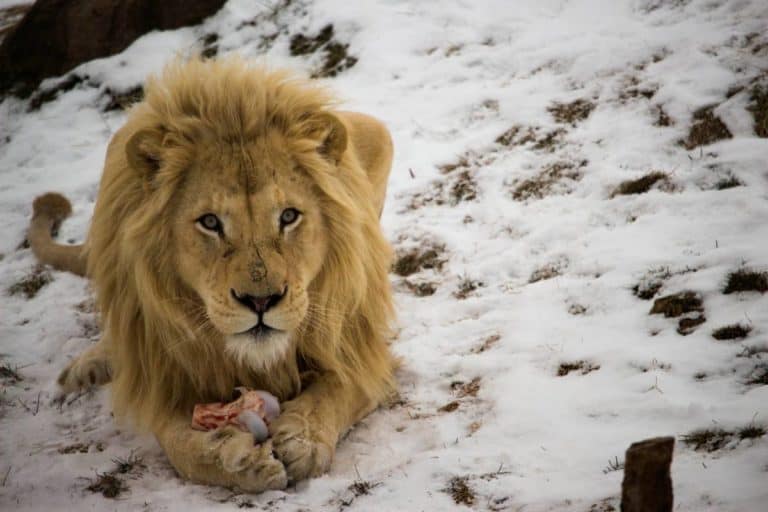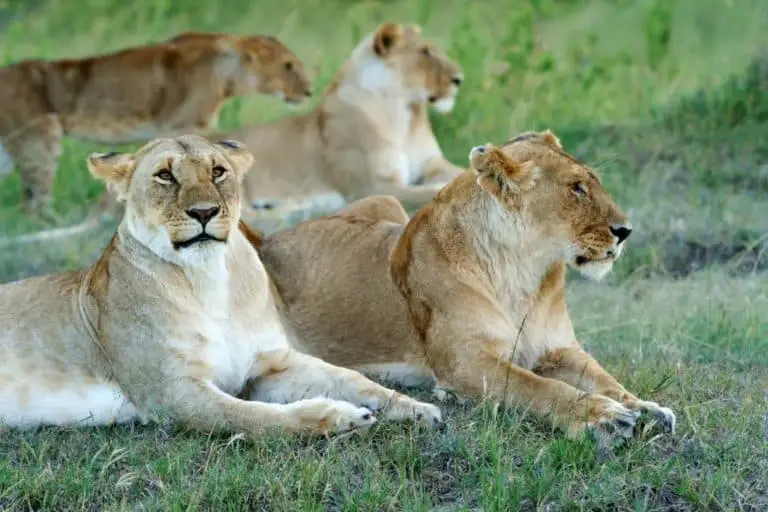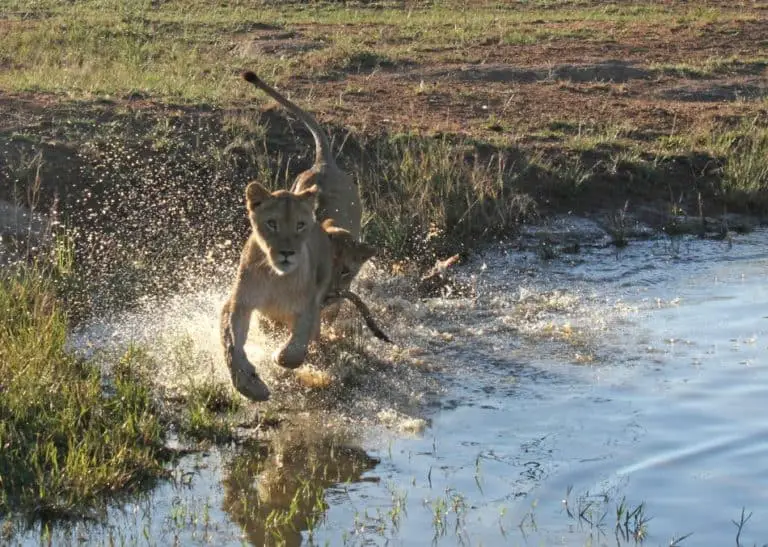23 Interesting Facts about Lions that You Didn’t know
This article will give you an in-depth overview of the fascinating world of lions. Lions are one of the most popular animals among zoologists, and there is no lack of information about their behavior and biology.
This article provides interesting facts about lions that may not be common knowledge to many people, so read on!
1) Male lions are the only cats that grow a mane.
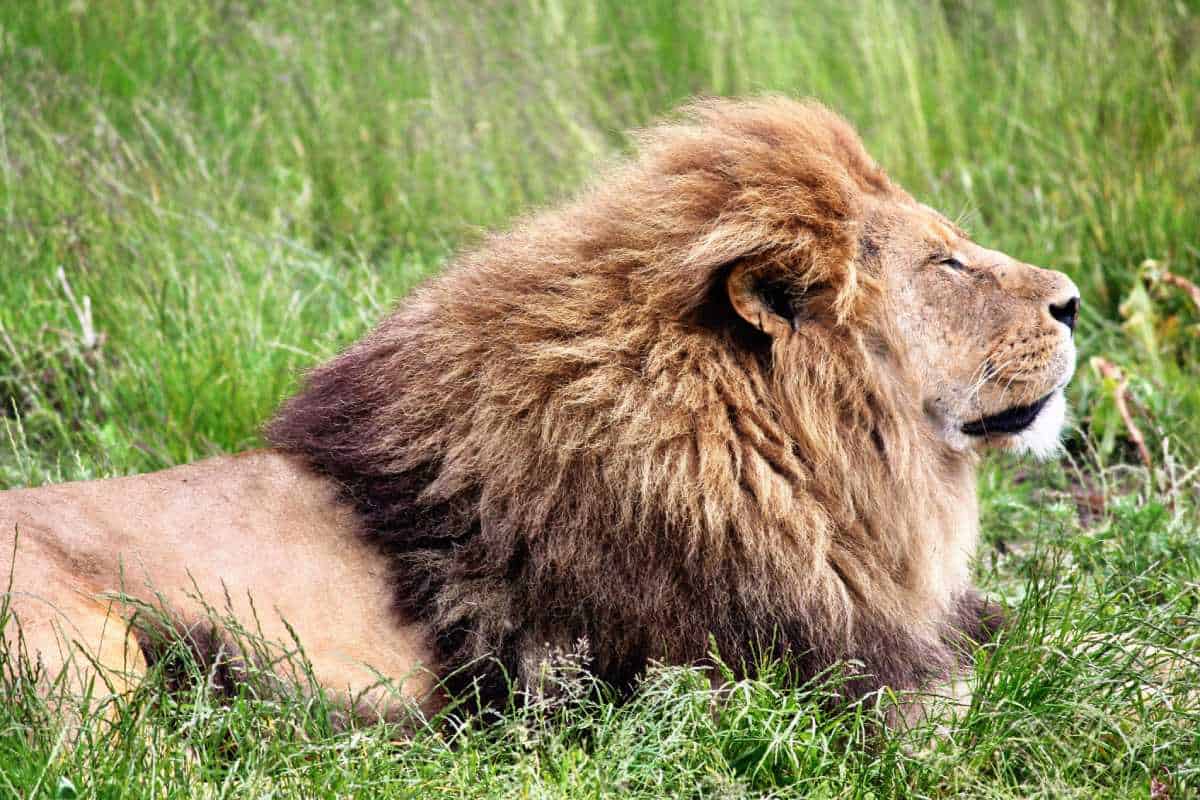
They have no other cat in their family to compare it to, so they don’t know that what they have is unusual.
For one thing, the mane is a sexually selected characteristic. It’s not randomly chosen as the color of a lion’s fur. Females prefer to mate with males who have a big, impressive mane.
Males use their manes for two things: intimidation and attraction.
The mane makes their heads look more significant and impressive when they roar. What’s interesting is that lions use different roars for different reasons.
2) A lion’s roar can be heard up to five miles away.
A lion’s roar can be heard up to five miles away. It is the most powerful sound in nature. Even if they were an athlete or professional singer, the average person would not have the lung capacity to produce such a loud noise.
This means that lions are unique animals who possess some superpower we humans don’t know about yet, or maybe it’s just because they’ve got huge lungs!
Lions also have particular muscles in their throat and mouth to help them roar really loud.
3) Lions are the only cats that live in groups, called pride.
Lions are the only cats that live in groups called pride. A pride usually consists of about fifteen lions but can range in size from two to more than thirty lions.
A pack is usually led by a single male lion who is the head of the group. He is usually the most significant and most robust lion in the pride. The other lions in the group are either his sons or brothers.
A Pride provides a sense of security for their members and helps them hunt more efficiently. They can also keep their cubs safe from larger predators, such as tigers and hyenas, that would otherwise prey upon the young lions.
4) Male lions usually only hunt if there is no food available from the lionesses.
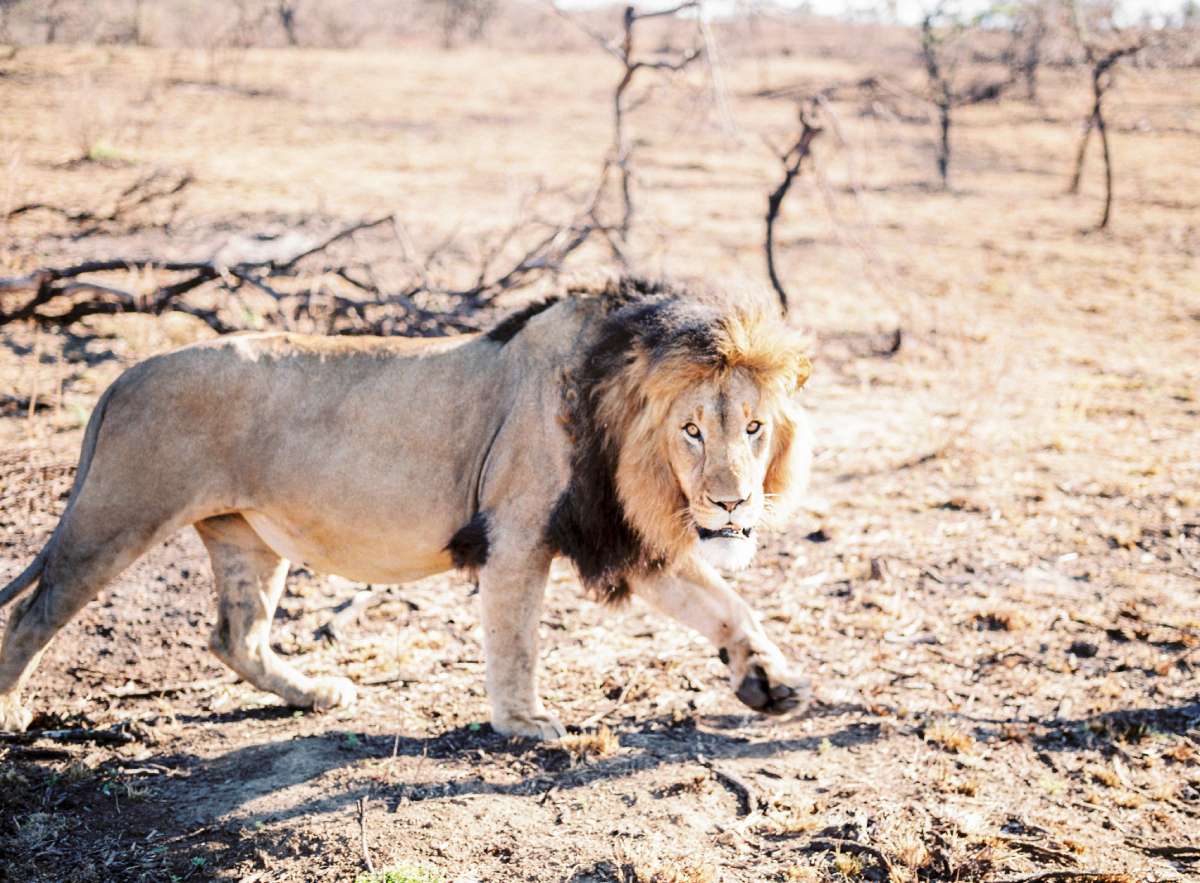
Male lions usually only hunt if there is no food available from the lionesses.
However, a recent study by University of Copenhagen researchers found that when two male lions are in a group with three or more females, one male will start hunting for prey even when fed by the other males. This means that female lions might actually be the ones who determine how often males need to hunt.
The findings also show that these lion groups likely exist because of human interference and not natural selection.
Male lions were previously thought to form groups based on age and size rather than sex ratios; however, this new study shows otherwise. The number of females present in these groups was shown to affect whether or not males hunted.
5) Lions can run up to 50 miles per hour.
Lions can run up to 50 miles per hour in the wild, meaning they can easily outpace prey (and people).
They’re also powerful, capable of taking down animals much more significant than themselves. As apex predators, lions have few enemies in the wild – a fact that has helped them remain one of the most iconic animals on the planet.
6) A lion’s tail is used for balance when running.
Like many other animals, Lions have a tail used for balance when running. It’s not just the long-legged animals that need this extra bit of stability while moving at high speeds. Their backsides are also used for signaling to other members of the pride, including mating.
Lions are the only cats with a tail they use for balance when running. Their tails are also used to signal other pride members, including mating.
When two lions want to show affection towards one another, they will stand side by side, hold their tails up, and intertwine them.
7) A lion’s diet consists of mostly wildebeest, zebra, and antelope.
A lion’s diet consists of mostly wildebeest, zebra, and antelope. However, a new study shows that also eat other animals from time to time.
8) A lion can eat up to 90 pounds of meat at one time.
That means that a full-grown lion could devour an entire zebra in one sitting! Lions are known for their powerful jaws and sharp teeth, which allow them to tear through meat with ease.
Lions need to eat so much food because they cannot digest all of the meat, fur, and bones that they eat. As a result, many lions will regurgitate their meals. They also spend about 20 percent of their day eating!
9) A lioness usually gives birth to a litter of three cubs but litters range from one to six in number.
The gestation period of a lioness is about 110 days. Cubs are born blind and helpless and weigh about two pounds. They nurse for about six months but begin to eat meat at three months old. Lionesses usually stay with their cubs until they are about eighteen months old when the young lions start to hunt and fend for themselves.
Lionesses are fiercely protective of their young and remain with them until they are 18 months old.
However, cubs learn to hunt and fend for themselves early. Female lions typically give birth to two or three cubs at a time, but sometimes as many as six.
10) Male lions are not involved in raising cubs.
Male lions do not typically participate in the raising of young cubs. However, they will protect their territory and the females and cubs that live there.
Male lions are not typically involved in the raising of young cubs. They will protect their territory and the females and cubs that live there, but otherwise, they go about their solitary lives.
Male lions stay in the same territory all of their lives, while females move on to new environments when they get older or more mature.
11) Lions spend 14 hours a day resting!
Lions spend 14 hours a day resting. This leaves them only six hours for hunting and taking care of their young.
Lions spend most of the day in dense underbrush or hanging out in the hot sun, waiting for the perfect opportunity to pounce on prey.
When it comes down to it, lions are just big, lazy cats … when they’re not hunting for their next meal, that is! They spend most of the day sleeping in dense underbrush or hanging out in the hot sun.
Lions are nocturnal animals and will usually begin to stir at nightfall. They prefer to hunt after dark because their prey tends to be less alert. Lions can see very well during the night and can even spot their prey from a distance.
12) Lions have large paws with soft pads on the bottom, which help them to stalk silently while hunting.
They can also “lock” their claws to keep them from retracting unexpectedly if they accidentally step on something sharp.
Lions have soft pads on the bottom of their paws, which helps them creep up on their prey and large claws that they can lock into place to prevent accidental injury from something sharp.
Their paws also have a false heel, giving them more leverage when pulling down on their prey.
13) There are only seven “big cat” species globally.
There are only seven “big cat” species in the world: lions, tigers, jaguars, leopards, snow leopards, clouded leopards, and cheetahs.
Cheetahs often get confused with leopards, but they are not related.
14) Lions do not climb trees well and are not good swimmers.

Lions do not climb trees well and are not very good swimmers. Their large size makes it difficult for them to move through the branches of trees, and they can only swim for short distances.
Lions are much more comfortable on the ground, using their large size to their advantage. However, lions will often seek refuge in a tree when threatened or attacked by other animals in the wild.
15) Lions can live for 10 to 15 years in the wild and 30 years in captivity.
Lions can live for 10 to 15 years in the wild and 30 years in captivity. The average lifespan is 12 to 16 years, but they can sometimes live for much longer than that.
16) The roar of a lion is one of the most iconic sounds in nature.
The roar of a lion is one of the most iconic sounds in nature. It can be heard from five miles away, making it easier for lions to communicate even when they are far apart.
17) When male lions reach puberty, they live alone until they take over another pride.
When male lions reach puberty, they live alone until they can take over another pride. Young males typically stay on the outskirts of a pack until they are big and strong enough to challenge the leader for dominance.
Males lions reach puberty at around three years old, and once they have reached adulthood, they will leave their families and live alone until they can take over another pride.
18) The size of a lion’s mane is often considered an indicator of strength or rank within the pack.
It can take up to four years for a lion’s mane to grow to its full size, and the mane’s size is often considered an indicator of rank or strength within the pack.
19) The Asiatic lion is more miniature and has a different mane than the African lion.
The mane is also not as thick, and the fur on the head and neck is usually lighter in color.
20) Lions are not found in the Amazon Rainforest.
They are more likely to be found in grasslands, savannas, and forests.
21) The leopard is the most destructive enemy of a lion’s pride due to its hunting strategy.
They typically stalk their prey from a distance before attacking, which makes them very difficult for lions to catch.
22) The male lions within a pride will only associate with each other when mating or hunting.
When female lions go into heat, the males will group together and leave the females to guard the territory.
23) Since 1990, lion populations have decreased by 50%.
The decline has been accelerated due to poaching and the loss of habitat.
This is a significant decrease in numbers, and we need to do what we can to protect these majestic animals.

